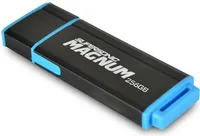USB 3.1 Tested: Performance On MSI's X99A Gaming 9 ACK
We got our hands on the first USB 3.1-capable motherboard, MSI's X99A Gaming 9 ACK, and ASMedia's ASM1352R-equipped developer board for some early benchmarks with two striped SSDs and an ultra-fast thumb drive.
Coming Soon To A Motherboard Near You
As of right now, ASMedia is the only company ready with USB 3.1 silicon. Others will follow, of course. But Intel isn’t going to have the technology built into its chipsets any time soon. It’s not part of Broadwell’s supporting platform and it won’t be in Skylake, the generation after. Instead, we’ll have to wait until Cannonlake for native USB 3.1. Mainstream adoption has to start somewhere though, and enthusiasts will lead the way in 2015.
The process will be slow, obviously. Our sources tell us that ASMedia will have competition in the controller space by the second quarter of 2015. Your favorite names in external storage, including enclosures and thumb drives, are expected to start shipping in Q3 of this year. Between now and then, motherboard vendors like MSI will do their part to jump-start the ecosystem. Should you bite?
That all depends on why you’re buying a new platform, and how long you intend to keep it. Haswell-E is a relatively young architecture, so enthusiasts replacing old Nehalem- or Sandy Bridge-E-based setups today would be wise to lay the foundation for USB 3.1 support. Conversely, you lose nothing by waiting. The X99A Gaming 9 ACK will undoubtedly be a $400+ motherboard like the X99S Gaming 9 ACK before it—there’s still a ton of room to fill in the X99 and Z97 space with more affordable options. And by then, we’ll be that much closer to the release of USB 3.1-capable devices.
It takes a couple of striped SSDs to really push USB 3.1. And even then, you’re looking at transfer rates similar to first-gen Thunderbolt. Without question, combining USB 3.1 with the Type-C connector opens the door to more exciting capabilities. But for now, we’re left anticipating thumb drives faster than today’s fastest SATA 6Gb/s drives. As power users, we can dig that.
Get Tom's Hardware's best news and in-depth reviews, straight to your inbox.
Current page: Coming Soon To A Motherboard Near You
Prev Page The Fastest USB 3.0 Thumb Drive And CPU Utilization-
Tom Delco I remember when Thomas Pabst, founder of TomsHardware.com, called USB the "useless serial bus!" Man, was he wrong. Some guys have no vision!Reply
Tom DelConte -
jtd871 Would it kill you to use consistent units for reporting results?! The 1st two charts on page 2 are MB/s while the third is time (seconds). I understand that it's easier to report the time for the file copy, but it wouldn't have been too difficult to calculate and report an approximate average transfer rate.Reply -
qlum I think getting a faster usb3.1 port in the rear while having 3 sets of similar looking ports with different speeds is bound to cause confusion so unless you permanently have a fast device plugged into the fastest point Id say its a waste. Personally I use 1/2 usb 3 devices max and usually in the front which I regularly switch out so really quite useless in most cases.Reply -
RedJaron Reply
I'd say they'll come about the same time we get Firewire ZIP disk drives.15111483 said:When are going to see USB 3.1 external 3.5 inch floppy drives? :) -
SteelCity1981 usb 3.1 will be a slow adaption. heck usb 2.0 still floods the market let alone usb 3.0. it's been what in the past year that we are finally starting to se usb 30 start to become the norm in devices now????Reply -
RedJaron Reply
That's largely due to consumer realities. USB3 only makes sense when transferring massive data loads. What devices actually need to do that? Mass storage, and that's it. Now compare storage devices to the number of every other USB device available. Your keyboards and mice still operate at USB 1.1. Printers, scanners, and office peripherals are still on 2.0 ( some possibly still on 1.1, ) and they can't even saturate that pipe. USB network adapters work just fine at 2.0 speeds. And the vast majority of flash drives today are still used to save a few office documents, pictures, and other small files. Incredibly few people are hauling around Windows install ISOs or large drive images on their thumb drives.15113368 said:usb 3.1 will be a slow adaption. heck usb 2.0 still floods the market let alone usb 3.0. it's been what in the past year that we are finally starting to se usb 30 start to become the norm in devices now???? -
SteelCity1981 I see that intel is still heavily investing in thunderbolt, which is prob why they aren't putting native usb 3.1 support on their chipsets for the next two generations reminds me of usb 3.0 all over again with intel.Reply

